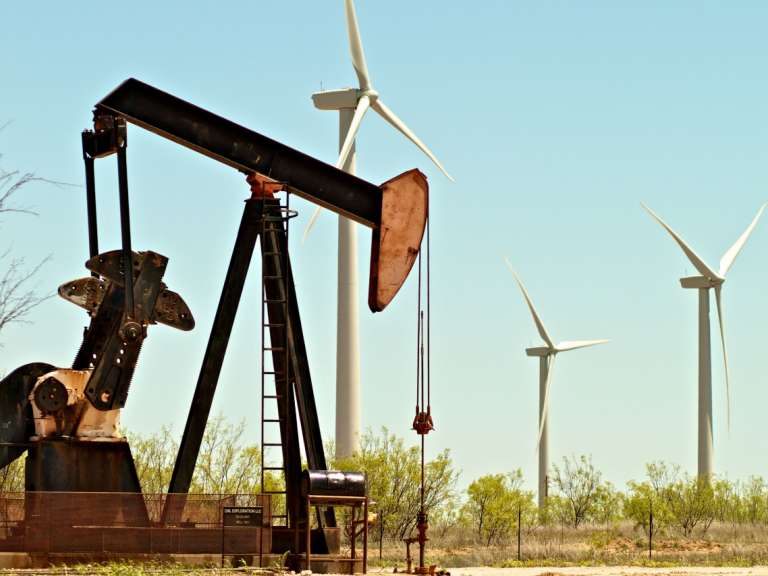Hybridization: Making the Best of Both Worlds
Diana KightlingerFor power plants to get the most value from hybridization, it will take a careful approach that incorporates learnings from the old world and the new.

Today's power landscape is being shaped by convergence—the convergence of traditional and renewable technologies, dispatchable and intermittent sources, physical and digital assets, central and distributed generation, and large and small facilities. No matter how conventional your current environment is, business and regulatory demands, along with advancing technology, will call for hybridization in decades to come.
But there's debate about the pace of change. According to the EIA's International Energy Outlook 2017, fossil fuels will still account for 77 percent of energy use in 2040.
Still, 2030 isn't that far away. Many corners of the globe are already transitioning from an electricity system based primarily upon large, centralized generation, transmission, and distribution facilities to one that also integrates distributed, digitally enhanced, and low-carbon technologies. This progress is promising, but as the shifting energy environment unfolds, utility and plant managers face increasing challenges and uncertainty related to hybridization.
While traditional energy sources are nothing if not dependable, making them the perfect complement to renewables known for their variability, renewables are changing the nature of the load and the energy and capacity needs of electricity systems. And that's particularly true when renewables are also distributed power technologies, like wind turbines or solar panels that contribute to—and complicate—the transmission and distribution network with bidirectional flows. Electric vehicles will add to the complexity: By 2040, according to Bloomberg New Energy Finance's Electric Vehicle Outlook 2017, 54 percent of new car sales and 33 percent of cars globally will be electric.
With so many disparate sources contributing to the electricity system, navigating the future can seem untenable. Digitization can help plant owners and operators make sense of it all by overlaying a common data framework, but the investment is substantial and the impact uncertain.
Many new technologies are less differentiated, as well, with lower barriers to entry and reduced ongoing service requirements. And power operators cannot bet on all of them—they must pick and choose carefully. For the first time ever, energy-efficient technologies in some developed countries are causing demand to grow slower. That calls for caution when planning power generation in years to come.
Older generation assets won't disappear overnight, of course. For the foreseeable future, the power industry will need an approach for shaping a hybrid world.
Whether they're bolstering core businesses or launching new ones focused on emerging technologies, electric utilities are restructuring. Here's a framework for forging ahead:
Once you have tackled these four steps, you're ready to restructure your environment to make the most of both traditional sources and emerging technologies. Utilities have already implemented hybrid approaches incorporating digitization, renewables, and distributed generation to achieve performance gains.
Digitization provides the opportunity to operate and control T&D networks, improve performance of individual plants and entire fleets, and make the most of hybrid microgrid systems. For example, the energy company Exelon, which provides electricity to millions of US customers, is implementing machine learning-based analytics to increase the reliability and efficiency of the electric grid.
Commercial buildings, retail stores, and industrial facilities are transforming into intelligent environments with the help of sensor-based lighting, smart controls, and a range of new software technologies.
The 2016 estimated levelized cost of electricity for wind and solar runs $55.8/MWh and 73.7/MWh, respectively, according to the US Energy Information Administration, and is expected to continue dropping. But given the intermittent nature of wind and solar, the grid still needs to couple variable generation technology with fossil fuels—especially natural gas for lower emissions—and nuclear power to provide dependable baseload and peak power.
Distributed power technologies typically generate less than 100 MW and often less than 50 MW. They can include diesel and gas reciprocating engines, gas turbines, fuel cells, solar panels, and small wind turbines. They're more widely available, smaller, more efficient, and less costly than a decade ago—and they're disrupting the existing network.
Especially in rural areas, grid operators have a choice to make between larger and smaller generation assets. The economics of power plants have historically meant the bigger, the less expensive. But a large utility may now decide to use smaller power sources instead of extensive transmission and distribution networks.
Power plants and grids are large, complex, and long-lived systems—and change in the business, regulatory, and technology environment surrounding them can be glacially slow. In each geography, market forces and customer demands will determine the right mix and timing for energy solutions and the speed with which hybridization will characterize the power world.
The rise of renewables, the retirements of coal and nuclear plants, advances in gas turbine technology, increased competition across fuel sources, and emissions legislation are changing market dynamics across the globe.
Cities are financing energy projects for sustainability through conventional means such as taxes and bonds, and through innovative mechanisms like intracting and crowdfunding.
The role of the utility customer is changing, from ratepayer to supplier, storer, and balancer of the electrical load. As customers embrace distributed energy resources, utilities need to consider new positioning and pricing to maintain their viability.